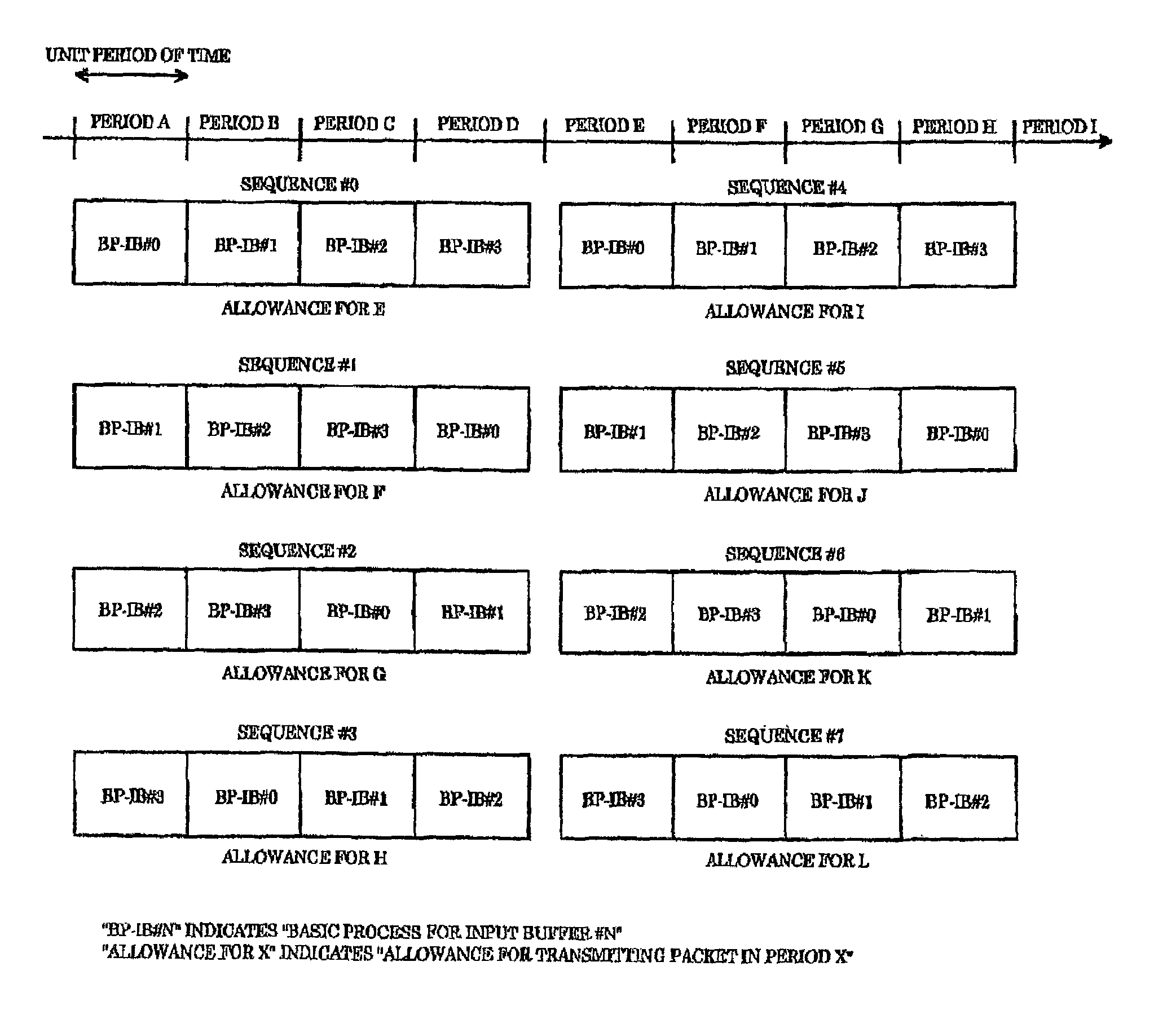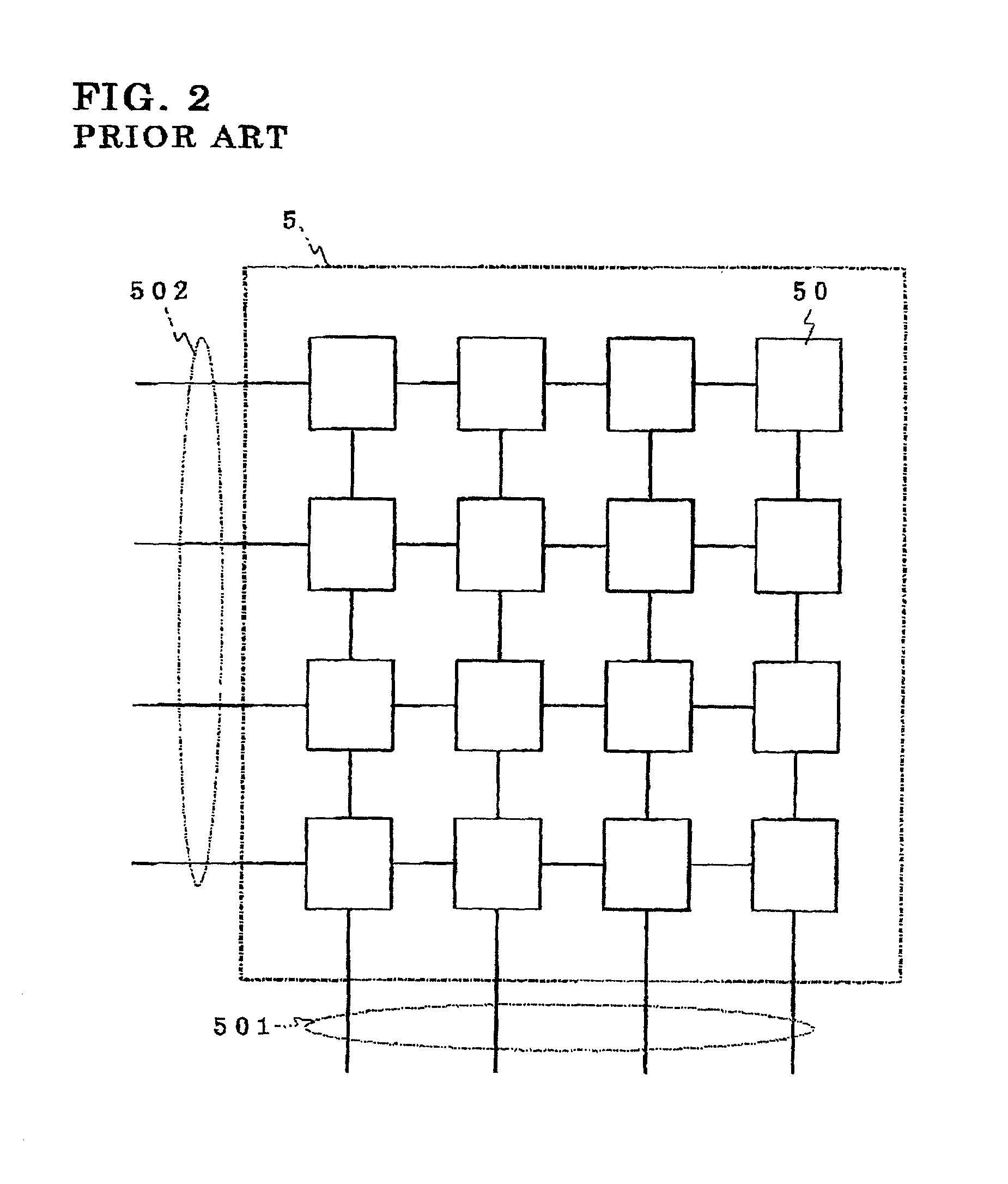Arbiter circuit and method of carrying out arbitration
a technology of arbitrator circuit and circuit, which is applied in the field of arbitrator circuit, can solve the problems of destroying data carried by packets, significant increase in fabrication cost, and conventional packet exchangers without efficient accumulating algorithms, etc., and achieves efficient accumulating plurality, low process capacity, and increased capacity of packet exchangers.
- Summary
- Abstract
- Description
- Claims
- Application Information
AI Technical Summary
Benefits of technology
Problems solved by technology
Method used
Image
Examples
first embodiment
[0118]FIG. 6 is a timing chart showing a timing at which each of sequences is carried out in the input sequential arbitration in the method of carrying out arbitration in a packet exchanger, in accordance with the
[0119]It is assumed in the first embodiment that a packet exchanger has four input and output ports.
[0120]In the first embodiment, four sequences equal in number to the input and output ports are concurrently carried out. In each of the sequences, an allowance to transmit a packet at different times is made. In the first embodiment, as illustrated in FIG. 6, an allowance to transmit a packet at a time E is made in a first sequence #0, an allowance to transmit a packet at a time F is made in a second sequence #1, an allowance to transmit a packet at a time G is made in a third sequence #2, and an allowance to transmit a packet at a time H is made in a fourth sequence #3.
[0121]After the first to fourth sequences #0 to #3 have been completed, next four sequences #4 to #7 concu...
second embodiment
[0219]FIG. 18 is a timing chart showing a timing at which each of sequences is carried out in the input sequential arbitration in the method of carrying out arbitration in a packet exchanger, in accordance with the
[0220]In the second embodiment, after a first sequence has been completed, a second sequence is carried out. In the second sequence, the basic processes are carried out in an order just opposite to an order in which the basic processes are carried out in the first sequence.
[0221]For instance, in the first sequence #0, the basic processes are carried out for the input buffers #0, #1, #2 and #3 in this order. In contrast, in the fifth sequence #4 carried out just after the first sequence #0, the basic processes are carried out in an order opposite to the order in the first sequence #0. Specifically, the basic processes are carried out for the input buffers #0, #3, #2 and #1 in this order.
[0222]This arrangement prevents input buffers having a smaller number from preferentiall...
third embodiment
[0231]FIG. 20 is a timing chart showing a timing at which each of sequences is carried out in the input sequential arbitration in the method of carrying out arbitration in a packet exchanger, in accordance with the
[0232]In the third embodiment, the sequences #0 to #7 are grouped into a first group including the sequences #0 to #3 and a second group including the sequences #4 to #7, and an intermission is arranged between the first and second groups.
[0233]Specifically, the sequences #0 to #3 are first concurrently carried out. Then, after a unit period of time has been passed, the sequences #4 to #7 are concurrently carried out. In the sequences #0 to #7, an allowance to transmit a packet at different time is made.
[0234]In accordance with the third embodiment, a signal indicative of information relating to vacant output ports can be transmitted through the first to fourth unit modules 31 to 34 in a unit period of time as an intermission.
[0235]In the third embodiment, though a sequenc...
PUM
 Login to View More
Login to View More Abstract
Description
Claims
Application Information
 Login to View More
Login to View More - R&D
- Intellectual Property
- Life Sciences
- Materials
- Tech Scout
- Unparalleled Data Quality
- Higher Quality Content
- 60% Fewer Hallucinations
Browse by: Latest US Patents, China's latest patents, Technical Efficacy Thesaurus, Application Domain, Technology Topic, Popular Technical Reports.
© 2025 PatSnap. All rights reserved.Legal|Privacy policy|Modern Slavery Act Transparency Statement|Sitemap|About US| Contact US: help@patsnap.com



